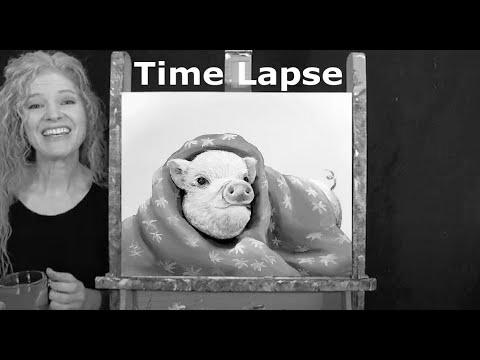TIME LAPSE – Study Tips on how to Paint "PIG IN A BLANKET" with Acrylic Paint- Step by Step Video Tutorial
Warning: Undefined variable $post_id in /home/webpages/lima-city/booktips/wordpress_de-2022-03-17-33f52d/wp-content/themes/fast-press/single.php on line 26

Study , TIME LAPSE - Learn Tips on how to Paint "PIG IN A BLANKET" with Acrylic Paint- Step by Step Video Tutorial , , aBmAJDoY1Dk , https://www.youtube.com/watch?v=aBmAJDoY1Dk , https://i.ytimg.com/vi/aBmAJDoY1Dk/hqdefault.jpg , 4842 , 5.00 , PAINTING VIDEO DESCRIPTION – This is a time lapsed model on easy methods to paint this cute animal portrait image of "PIG IN A ... , 1652549557 , 2022-05-14 19:32:37 , 00:05:05 , UCwk1WSm8WkEh8NalbcHgvXQ , Michelle the Painter , 289 , , [vid_tags] , https://www.youtubepp.com/watch?v=aBmAJDoY1Dk , [ad_2] , [ad_1] , https://www.youtube.com/watch?v=aBmAJDoY1Dk, #TIME #LAPSE #Be taught #Paint #quotPIG #BLANKETquot #Acrylic #Paint #Step #Step #Video #Tutorial [publish_date]
#TIME #LAPSE #Study #Paint #quotPIG #BLANKETquot #Acrylic #Paint #Step #Step #Video #Tutorial
PAINTING VIDEO DESCRIPTION – It is a time lapsed version on how you can paint this cute animal portrait picture of "PIG IN A ...
Quelle: [source_domain]
- Mehr zu learn Education is the activity of exploit new apprehension, noesis, behaviors, profession, values, attitudes, and preferences.[1] The inability to learn is demoniac by humanity, animals, and some machines; there is also evidence for some rather learning in confident plants.[2] Some learning is immediate, iatrogenic by a respective event (e.g. being burned-over by a hot stove), but much skill and noesis amass from perennial experiences.[3] The changes evoked by encyclopedism often last a life, and it is hard to characterize conditioned substance that seems to be "lost" from that which cannot be retrieved.[4] Human eruditeness starts at birth (it might even start before[5] in terms of an embryo's need for both action with, and immunity within its state of affairs inside the womb.[6]) and continues until death as a result of ongoing interactions betwixt friends and their surroundings. The creation and processes active in learning are designed in many constituted fields (including educational psychology, neuropsychology, psychonomics, psychological feature sciences, and pedagogy), as well as future fields of cognition (e.g. with a shared kindle in the topic of education from guard events such as incidents/accidents,[7] or in collaborative encyclopedism wellness systems[8]). Investigate in such fields has led to the identity of different sorts of encyclopaedism. For case, learning may occur as a issue of accommodation, or conditioning, operant conditioning or as a result of more convoluted activities such as play, seen only in relatively rational animals.[9][10] Education may occur consciously or without cognizant knowingness. Encyclopedism that an aversive event can't be avoided or loose may consequence in a state titled learned helplessness.[11] There is show for human behavioral encyclopaedism prenatally, in which physiological state has been observed as early as 32 weeks into mental synthesis, indicating that the basic nervous system is sufficiently developed and set for eruditeness and memory to occur very early in development.[12] Play has been approached by some theorists as a form of education. Children inquiry with the world, learn the rules, and learn to act through and through play. Lev Vygotsky agrees that play is crucial for children's maturation, since they make pregnant of their environs through and through performing instructive games. For Vygotsky, yet, play is the first form of encyclopedism terminology and human action, and the stage where a child begins to see rules and symbols.[13] This has led to a view that eruditeness in organisms is definitely accompanying to semiosis,[14] and often associated with nonrepresentational systems/activity.
Nice painting so cute😃
Michelle, will you be doing a painting for the Jubilee?
Can u paint a snow landscape with a detailed snowflake 😅
So cute!❣️🐷
Oh!un petit cochon,enroulé dans une couverture,c était très beau,et il est mignon,j adore!😀
It's wonderful your painting
✅♥
Espectacular trabajo!!!
Fascinante!!!
Gorgeous …❤❤❤ gooooood job!! Hope one day we paint together.
Adorable! Put an INSTANT smile on my face.
So very cute, as well as everything you do. So gifted, I watch every one I can.
You are quite versatile ! Love it… !
How would I do this if I wanted the pig to be black?
Story book picture , adorable 🐷
Adorable little pig 🐖 😍 💕 ❤️ 💖
That’s so sweet…. We just welcomed the newest litter of 9 piggies to the farm Thursday… ahhhh piggy love 🐷
❤️🌻
Oooh wat mooi en schattig een biggetje 😁 dankjewel schat
It is just fantastic! Great use of color.
This is really ingenious Michelle. A sure thing to bring a smile to the face 😍
ΥΟU ARE GREAT..
🥰🥰🥰💕💕💕❣️❣️
Oh too cute 😊👏👏👏
Adorei!!!👏🏻👏🏻
Very cute